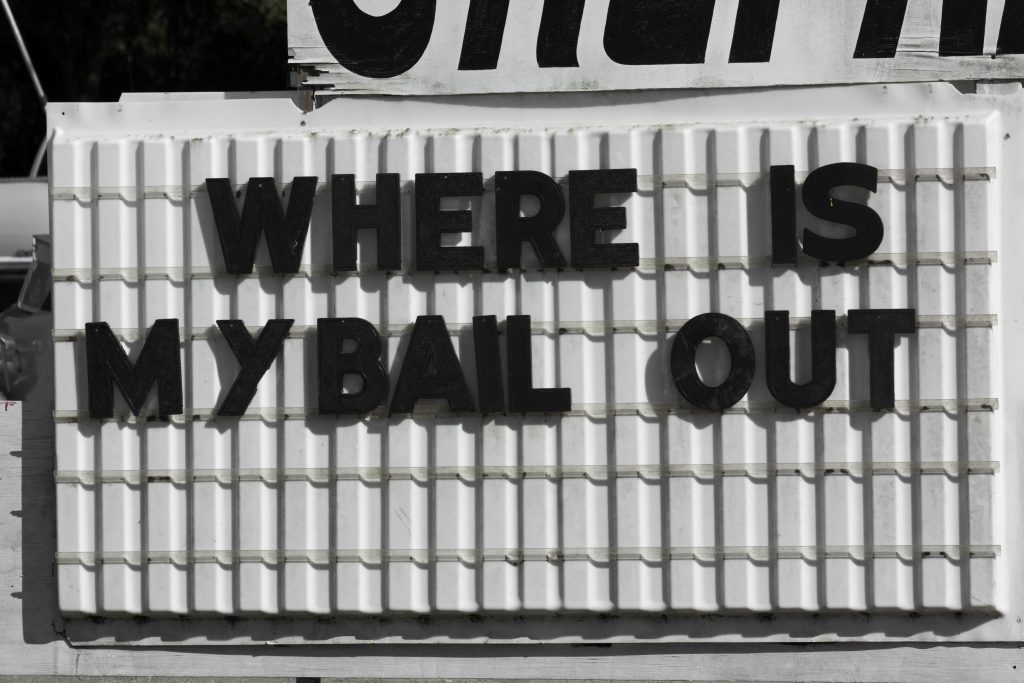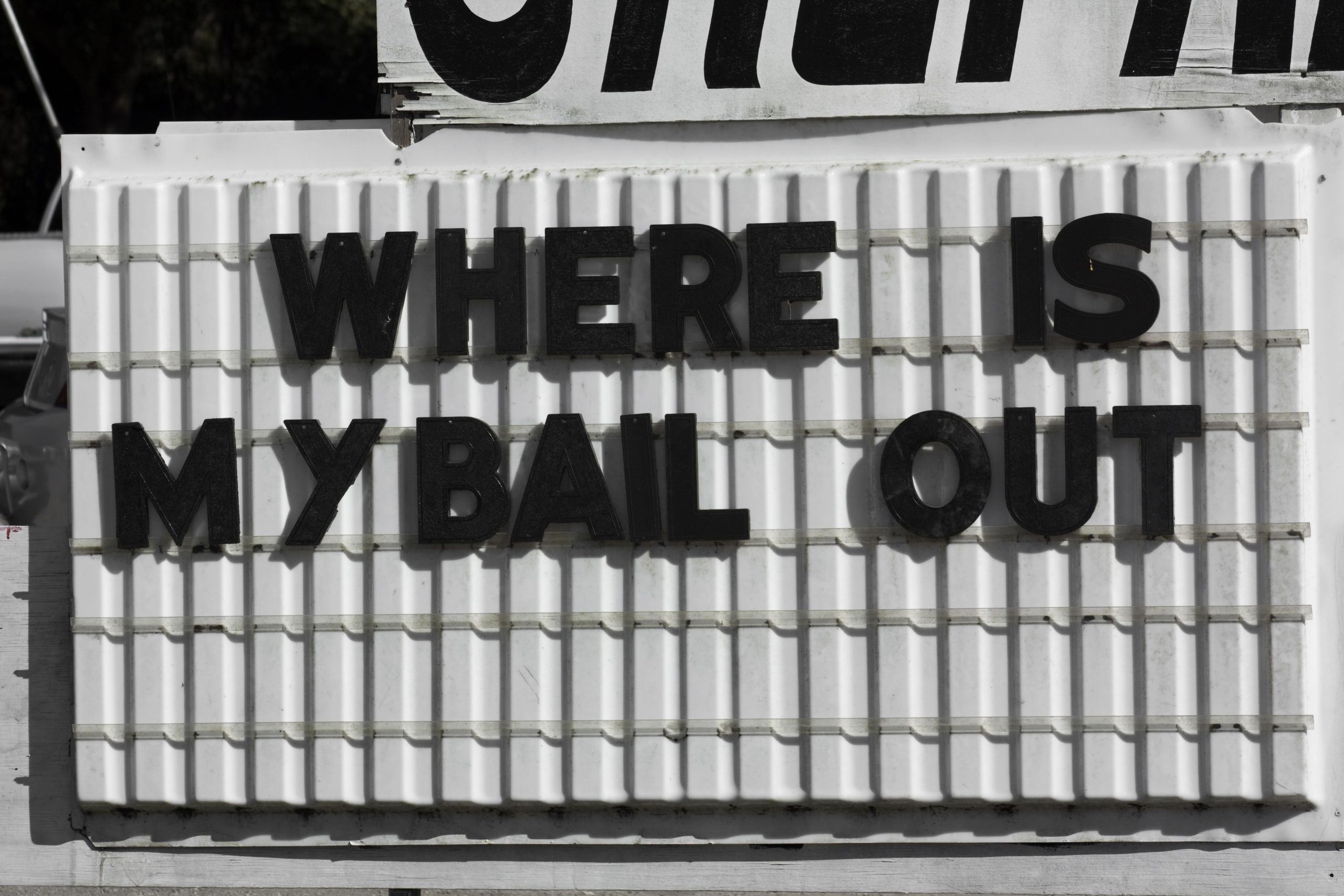TGIF.
I used to think the expression “Thank God it’s Friday” was a bit sophomoric. Is your job really that bad? Are your plans for the weekend really that good? Is that all you have to say for yourself? Of all the things worthy of thanks, Friday is what you want to lift up? Okay, have at it, tiger.
However, after this past week, I just want say one thing: “Thank God it’s Friday!” Make no bones about it. This has been one of the most exhausting weeks of my career. It truly has felt about 10 days long. While my plans for the weekend are still up in the air, I really am happy to see the last 5-7 days in the rearview mirror.
To be sure, there have been worse weeks in the past, far worse. To that end, the stock markets (S&P 500) have been slightly positive over the last 5 days as I type at 8:55 CDT on March 17, 2023. Hard to believe, huh? However, after 3+ years of stumbling from one problem to the next, what with the pandemic, the Russians, the Chinese, inflation, the Federal Reserve, last year’s red ink and everything else, we all need a break. However, this past week was akin to a solid left hook in the final seconds of a grueling 15-round prize fight.
Unless you really haven’t consumed any news, you know the reason for this past week’s angst. To the untrained eye, it appears the global banking system is standing at the precipice. First, it was Silicon Valley Bank’s woes. Then it was Signature Bank. If these weren’t enough, First Republic Bank needed some intervention from other, larger market players. Across the pond, Credit Suisse, a $500+ billion behemoth, got a roughly $50 billion lifeline from the Swiss government.
[If you haven’t listened to our team’s related Trading Perspectives Podcast on the Banking Breakdown, check it out here: https://tradingperspectives.libsyn.com/banking-breakdown]
Whew.
Are we revisiting 2008 again? Why aren’t the regulators regulating?
I mean… it gets bothersome bailing out bankers all the time, let alone expensive.
Let me start by answering the last question first. There is an old expression: “no one likes the Congress, but everyone likes their Congressman.” Similarly, no one likes bank bailouts, unless it is their bank getting the bailout. There is more than a grain of truth to that.
What about the regulators? This is where experience is valuable. Over the decades, I have had to deal with regulators of various stripes and agencies. In aggregate, they would all tell you basically the same thing: “we are not here to tell you how to run your business. We are here to make sure you are doing what you said you were going to do and that you are following the rules.” Make no bones about it, the government can’t regulate away poor business decisions, let alone the impact higher interest rates have on asset prices.
In truth, if the government regulated the industry the way indignant John Q. Public would like, banks would do little more than buy US Treasury Bills. Okay, maybe they would add a few 2-Year Notes to the mix. Hyperbolic? Not really.
But, what about the first question… are we revisiting 2008 again? What about that one, Norris?
While no one can look into the future with certain clarity, my crystal ball suggests we are far from that happening. But exactly how far? Is it the next block over? Across town? Adjoining county? Neighboring state? Fair enough. I would propose we are from, say, Birmingham to San Francisco, and on foot.
The reason for being sanguine has to do with overall bank liquidity and capital.
The important word in that last sentence is overall. This is because there will be, and are, some banks which have been stretched due to higher interest rates. The decline in their asset values have already curtailed their ability to extend credit. They are already anxious about their overnight liquidity. All of it.
However, outside of some outliers, notably Silicon Valley Bank and Signature, I submit most of these banks are likely smaller in size. By smaller in size, I mean community banks with which most people are not familiar. The 1st State Bank of Dogpatch, that sort of thing. As a result, I suspect loan growth in rural America will come to crawl, if not a halt, if it hasn’t already.
This will eventually lead to consolidation and fewer banks in the country.
However, the nation’s ‘money center’ banks are extremely flush with cash. These are, with no argument, JPMorgan Chase, Bank of America, Citigroup and Wells Fargo. At the end of last year, these four banks alone represented roughly 63.0% of the ‘Assets and Liabilities of Commercial Banks in the United States’ according the Federal Reserve’s weekly H.8 report.
So, it is fair to say how-goes the Big Four is how-goes the US banking system. In truth, they are too big to fail, no matter what anyone says. For grins, the assets of the all the banks in the Top 10 equal about 81% of the total. Trust me, it gets nerdier.
According to my handy Bloomberg terminal in my office, the Big Four had total loans & leases of $3.863 trillion at the end of 2022. While that is a lot of money, they had $7.020 trillion overall deposits with which to finance them.
As such, the loan/deposit ratio for US money center banks at the end of last year was 55.0%. This suggest there was a lot of cash sloshing about the collective balance sheet, and there was.
Combined, there was a total of $2.501 trillion in ‘cash’ and ‘interbanking’ assets. The later would include things like short-term repurchase agreements and the like. This number represented roughly 67.6% of all cash floating around the system, and would have been sufficient to cover 14% of all deposits. Conversely, Deposit Insurance Fund at the FDIC had a balance of, drum roll please, $128.2 billion at the end of 2022.
Let that sink in for a second. Cash and interbanking assets at our Big Four banks were equal to 19x the size of the FDIC’s fund with which to insure deposits. If that doesn’t tell you something about overall liquidity in the system, nothing will. It is robust.
Again, none of this is to say various individual banks won’t feel the squeeze due to higher interest rates. They have. They are. They shall.
However, the system as a whole is in much, much healthier shape than it was leading up to the 2008 Financial Crisis. In fact, it really isn’t even close.
As a result, I am not terribly concerned about the near-term solvency of the US banking system. Interest rates would have to significantly increase from their current levels, and the Feds have a lot of tools with which to mitigate the downside. On the flipside, the recent failures should be a powerful lesson to bank CFOs about balance sheet management.
In the end, no matter what I write, fear sells. Fear is also a very powerful motivator. It makes for great headlines, which can lead to bad decision making. It also makes for extremely long work weeks and the hope things will eventually settle down. One day, all of this stumbling from one problem to the next will mercifully be over.
Until then, thank God it’s Friday. Cue the Loverboy and turn on the grill.
Thank you for your continued support. As always, I hope this newsletter finds you and your family well. May your blessings outweigh your sorrows on this any every day. Also, please be sure to tune into our podcast, Trading Perspectives, which is available on every platform.

John Norris
Chief Economist & Brick Mason
Please note, nothing in this newsletter should be considered or otherwise construed as an offer to buy or sell investment services or securities of any type. Any individual action you might take from reading this newsletter is at your own risk. My opinion, as those of our Investment Committee, is subject to change without notice. Finally, the opinions expressed herein are not necessarily those of the rest of the associates and/or shareholders of Oakworth Capital Bank or the official position of the company itself.



